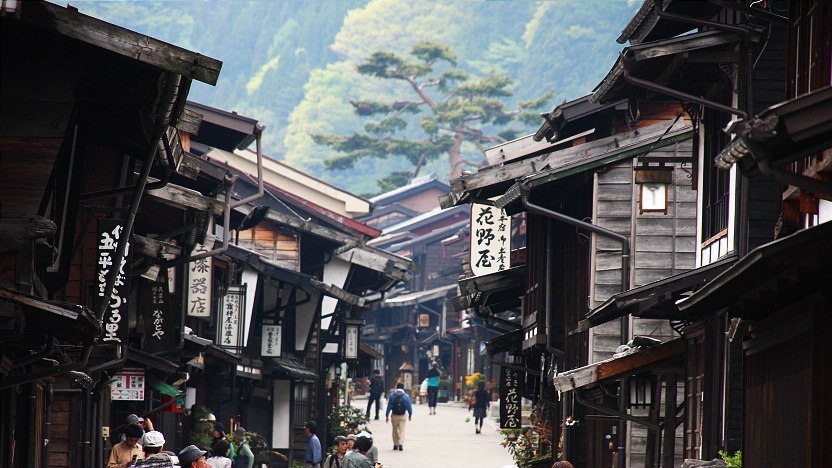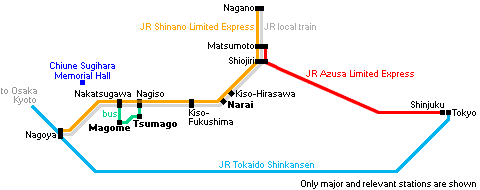
During the Edo Period (1603-1868), Narai (ō▐ŚŪłõ) marked the half way point between Kyoto and Edo to travelers along the Nakasendo Route. It was the most wealthy post town of the Kiso Valley, and was sometimes referred to as "Narai of a Thousand Houses". Visitors will understand this nickname when comparing Narai to the other former post towns in the area; the preserved houses stretch on much longer in Narai than elsewhere.
The long walk down Narai's main road is not without interest, though the restored houses are very similar to each other. Among the buildings, two are former residences open to the public, while others house souvenir shops, restaurants and minshuku. Narai's main drawbacks are that the Honjin and Wakihonjin (the main inns of former times) no longer remain, and that vehicular traffic is permitted on the street.

Getting there and around
Narai is a station along the JR Chuo Line, 25 minutes south of Shiojiri Station and 20 minutes north of Kiso-Fukushima Station by local train. Limited express trains between Nagoya and Nagano do not stop at Narai Station. Instead, change to a local train at Shiojiri or Kiso-Fukushima.
Narai Station is located at the town's northern end. You can explore the entire town on foot from the station. If arriving by car, the most convenient parking lot is located at the town's southern end.
How to get to and around the Kiso Valley

Questions? Ask in our forum.






